Blog Archive
Stitching the Seams Between Past & Present: A Conversation with a Modern NYC Garment Shop
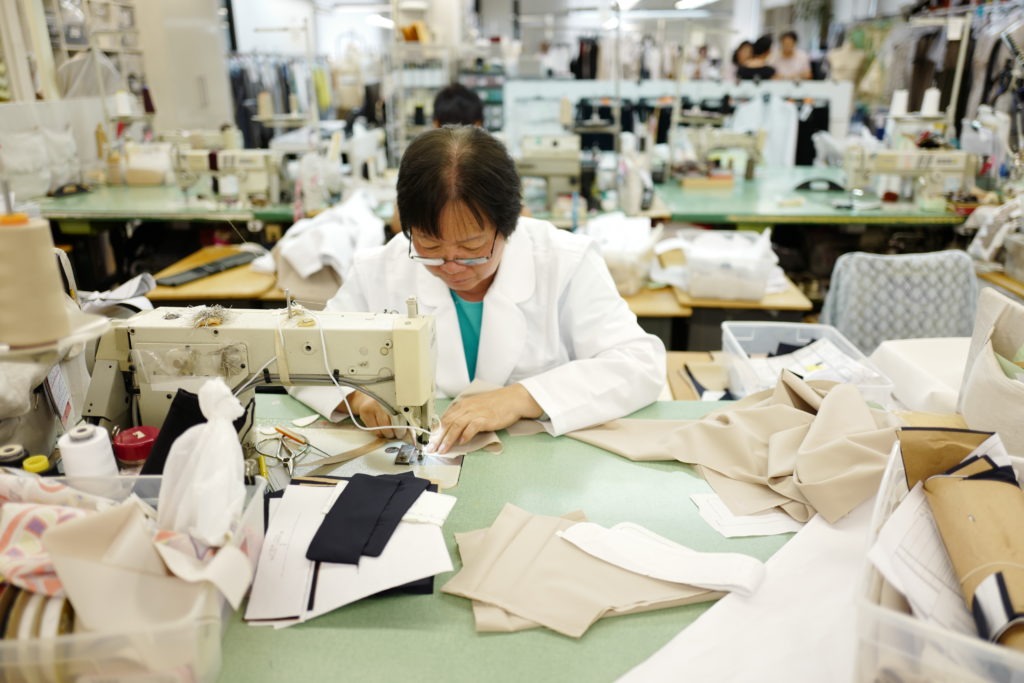
Photo by Lafayette 148 New York
It’s impossible to talk about New York City’s Chinatown and the Lower East Side in the middle of the 20th century without talking about the garment industry. So when the Tenement Museum knew we would be telling the story of Chinese immigration in the 1960s and 70s in our exhibit Under One Roof, we began to look at ways of incorporating this important aspect into the story we wanted to tell. And since we’re all about our neighborhood, we called on the designers at Lafayette 148 New York to help bring this story to life.
Since the garment industry is vital to the story of Chinese immigration to New York, we knew we had to incorporate it into our new exhibit, in a way unlike anything we’ve ever done before. To properly share this integral part of Mrs. Wong’s life, we have built an interactive garment shop inside 103 Orchard Street. Visitors will have the opportunity to sit down at sewing machines like the ones Mrs. Wong used, and learn about the daily lives of these women who worked tirelessly to provide for their families, who joined the International Ladies Garment Workers Union to bolster their community, and whose work ethic and determination are deserving of recognition and admiration.
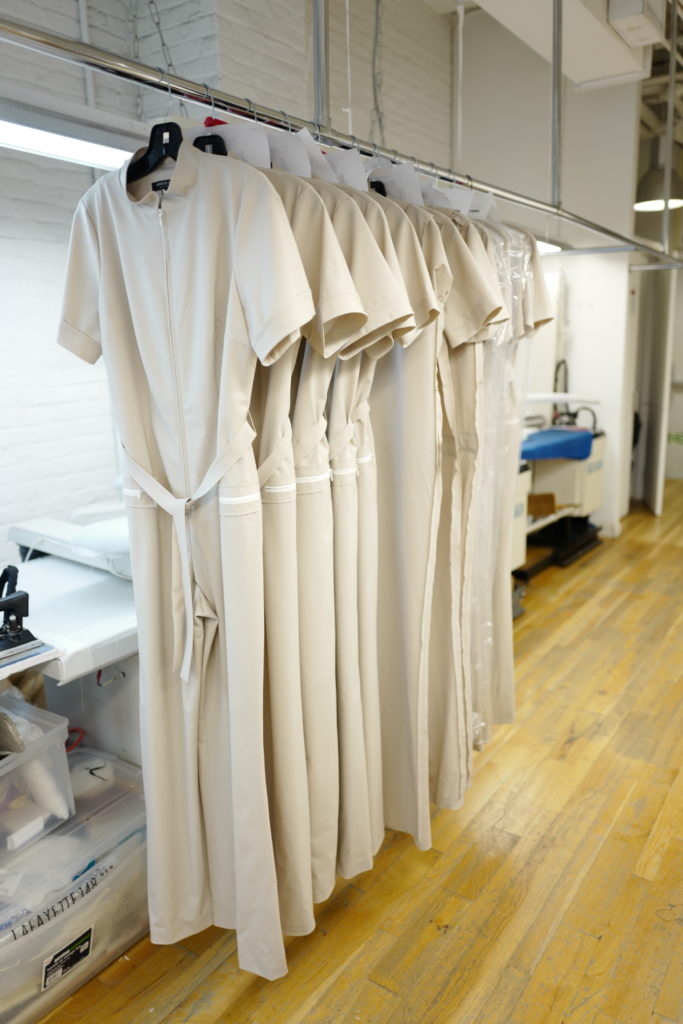
Photo by Lafayette 148 New York
And that’s where Lafayette 148 comes in. A local garment shop and fashion boutique in the heart of Chinatown, their story resonates with the one we will be telling at 103 Orchard Street. They’ve generously donated some of the materials that will be viewed in our recreated garment factory, helping us to share this unsung story with everyone. These reproduced 1980s style jumpsuits will help us demonstrate how production of these garments sold all over the world went from assembly to finished product.
In Sweatshop Workers, another Tenement Museum tour, we show how one family, the Levines, ran a small garment shop from their home in 97 Orchard at the turn of the century. The garment factory Mrs. Wong worked in decades later differed drastically in size, with new technologies increasing the scale and speed of the garment productions. So, too, does Lafayette 148 differ from the factories of the garment industry in its heyday. Their shop is 11-stories tall, designed to be bright and open to inspire creativity among their team, who not only manufacture the clothes but design them, too. Similar to how the industry operated in Mrs. Wong’s day, the operation at Lafayette 148 is just as large, with a quick turnaround rate. But they’re also capable of producing special order and custom fits, which has more in common with Mr. Levine’s sweatshop, or even Nathalie Gumpertz’s seamstress business, seen on our Hard Times tour.
We sat down with Deidre Quinn, CEO of Lafayette 148, to share the company’s story, and how their history and mission coincides seamlessly with that of the Tenement Museum.
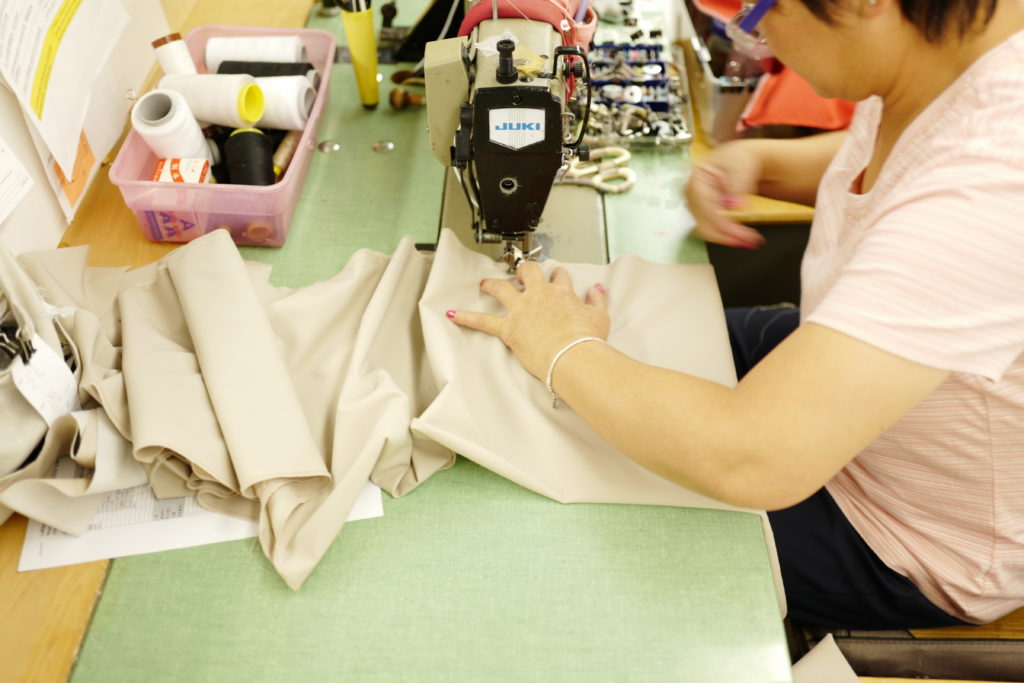
Photo by Lafayette 148 New York
Tenement Museum: What about the Museum’s mission, and our new exhibition Under One Roof, speaks to your brand?
Deirdre Quinn: The story of immigrants coming to the United States from China to open a factory and support other immigrant families by providing jobs is a direct reflection of our history as a company. Our founder Mr. Siu, brought his family to the United States and opened a factory in Chinatown. For many years before we became Lafayette 148 New York, we were a garment factory producing clothes for some of the best-known companies in the fashion industry.
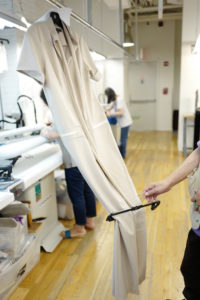
Photo by Lafayette 148 New York
TM: How did the garment factory culture of the 1960s & 70s influence the modern Lafayette 148 New York?
DQ: Founded in 1996 by Shun Yen Siu, Ida Siu, and myself, Lafayette 148 New York fuses the energy of its cosmopolitan New York roots with strong Chinese heritage. Our namesake Manhattan street address is home to our company’s headquarters, where our design studio, showroom, merchandising, brand communication, and sales departments thrive together under one roof. Our New York team works seamlessly with our talented team of artisans in Shantou, China resulting in an alluring combination of craftsmanship with our modern, minimal designs.
TM: What kind of other work do you do with education nonprofits, and why do you think this work is important?
DQ: Education is at the core of Lafayette 148 New York’s philanthropic ventures. In 2007, our founder, Shun Yen Siu, provided excellent employment to migrant workers with the creation of the company’s state-of-the-art design and manufacturing facility. When he realized that many of the children in his hometown of Shantou, China, had difficulty entering good schools to obtain a proper education, he felt an overwhelming urge to help the next generation and sponsored a local school which we call the School of Dreams. The School of Dreams is 100% supported by Lafayette 148 New York, and each season, the company holds multiple events to raise funds.
TM: What do you hope people will come away with after viewing Under One Roof, many of whom might be learning about the garment industry for the first time?
DQ: We hope that people will be reminded of the American Dream, and that when you work hard to pursue your dreams, you can achieve anything. We also believe in the importance in giving back to the community, so to be able to support the Tenement Museum and its’ efforts to preserve the history of Chinatown.
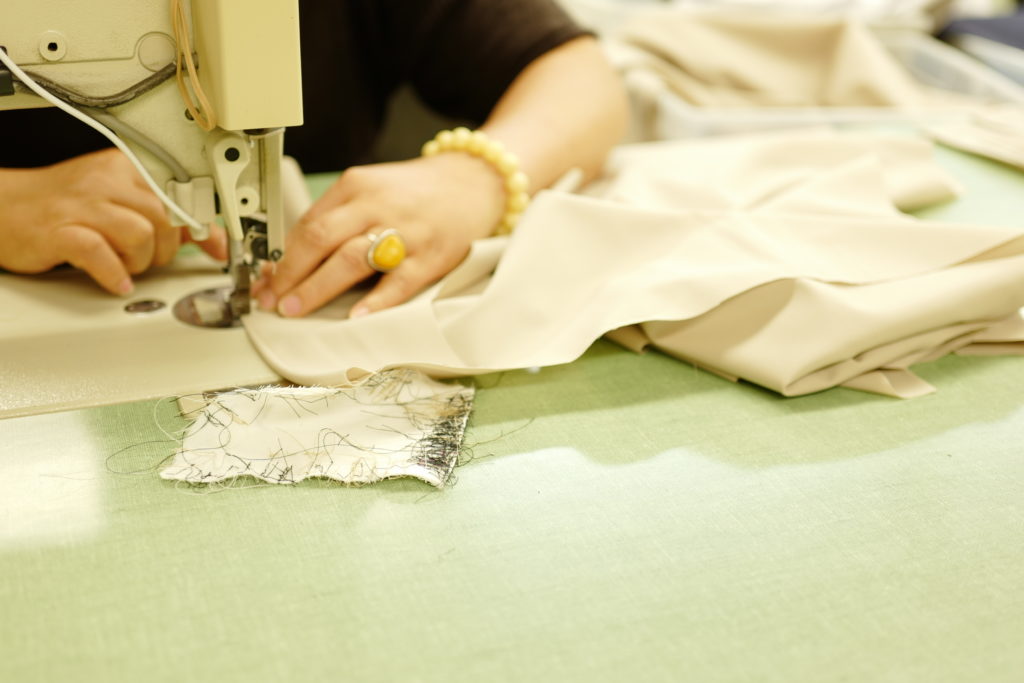
Photo by Lafayette 148 New York
- Post by Gemma Solomons, Marketing & Communications Coordinator at the Lower East Side Tenement Museum